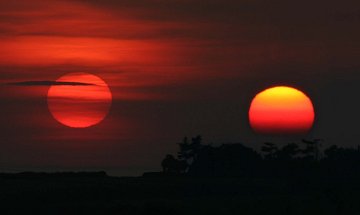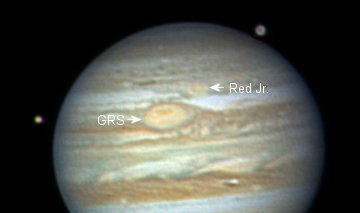 Did you miss the space station last week? Don't let that happen again. Sign up for Spaceweather PHONE.
Did you miss the space station last week? Don't let that happen again. Sign up for Spaceweather PHONE.
HAPPY SOLSTICE: On June 21st, Earth's north pole will be tipped to the max (23.5o) toward the Sun. Astronomers call this "a solstice." It marks the beginning of summer in the northern hemisphere, and winter in the southern hemisphere. The seasons are changing: Happy Solstice!
TWO SUNSETS: No two sunsets are alike. To prove it, UK photographer Darren Sprunt made this composite picture of the West Norfolk sun setting on June 2nd (left) and June 9th (right):

"I tried to catch the sun again on June 16th," says Sprunt, "but three clear Friday nights in the UK was never going to happen!" Two was plenty: The composite shows how changing clouds, dust and thermals make each sunset unique. It also shows how the sun moves north (left to right in this photo) with the approach of Summer.
Tonight's sunset is special because it is the last sunset of northern Spring. What color will it be? What shape? Watch it if you can.
RED vs. RED JR: What do you get when you put the two biggest storms in the solar system together? Know one knows. But we'll find out in July when the Great Red Spot bumps into its younger cousin Red Junior: full story.
"Red Jr. is really close to the Great Red Spot now," says Mike Salway of Australia who took this picture using a 10-inch telescope on June 12th:

Also shown are Jupiter's moons Io (left) and Ganymede (above right). See the markings on Ganymede? Those are real. Ganymede is the largest moon in the solar system, so big that even backyard telescopes can make out its murky details. If Ganymede orbited the Sun, it would be the 8th-largest planet, eclipsing both Mercury and Pluto.
See for yourself: Jupiter couldn't be easier to find. Step outside this evening at sunset and look south. Jupiter pops out of the twilight, brighter than any star, even before the sky fades to black: sky map.

